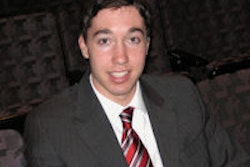Dear CT Insider,
Attendance at the recent RSNA meeting might have been down a notch from last year (5% according to organizers), but we found no shortage of intriguing reports from the world of CT in the Windy City.
In lung cancer screening, for example, U.S. researchers are taking a novel approach to risk assessment by measuring calcifications at the airway bifurcation. Why?
Thanks to an intriguing convergence of airflow dynamics and the process by which stressed tissues become calcified over time, the group found they could predict the presence of lung cancer with high accuracy. The pilot project is the subject of this issue's Insider Exclusive, brought to you before it has a chance to become calcified on our regular site.
CT is also helping to distinguish true pulmonary embolism from other perfusion defects, according to researchers from Seoul, South Korea. And organ by organ, it seems, the modality is carving itself a role in assessing antiangiogenic treatment response, according to an article on advanced colorectal cancer by AuntMinnie.com contributing writer Charlene Laino.
In the heart, Japanese researchers found they could detect the culprit lesion with CT angiography just as often as with intravascular ultrasound -- that is to say, 100% of the time. And researchers at the Medical University of South Carolina (MUSC) in Charleston found that dual-source CT was equivalent to MRI and better than SPECT for distinguishing reversible myocardial ischemia from infarct.
But everything isn't coming up roses. Smaller teenagers are getting way more radiation from CT scans than necessary, according to another article from the RSNA show by AuntMinnie.com staff writer Cynthia Keen. Fortunately, MUSC researchers have a plan to fix the problem.
We invite you to scroll down for the rest of the news in CT -- and stay tuned in the coming weeks for more from radiology's biggest, baddest meeting -- all in your CT Digital Community.




















